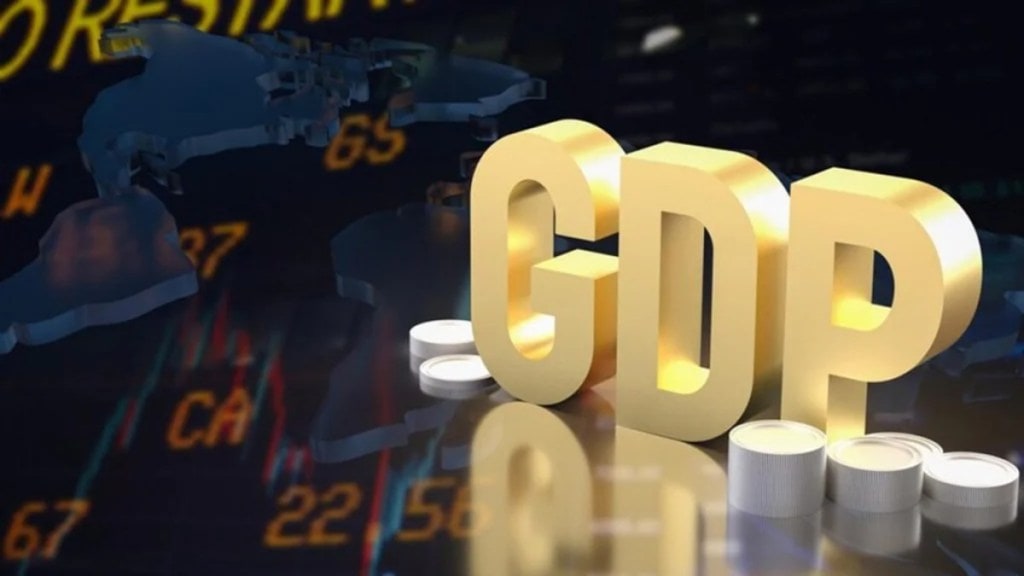India’s Gross Domestic Product (GDP) growth rate for the third quarter of current fiscal year stood at 6.2 per cent, according to government data released on Friday. This was in line with estimates. On a year-on-year (YoY) basis, GDP growth has slowed from 8.6 per cent, while on a quarter-on-quarter (QoQ) basis, it has gone up from 5.4 per cent recorded during Q2FY25. The sequential growth was on the back of increased government and consumer spending, data released by National Statistics Office (NSO), Ministry of Statistics & Programme Implementation (MoSPI) on Friday showed.
Per the government data, real GDP has been estimated to grow by 6.5 per cent in FY25. Nominal GDP is expected to witness a growth rate of 9.9 per cent in FY25. Both the growth rates are revised upward from their respective First Advance Estimates, it added.
As per the First Revised Estimates, Real GDP has grown by 9.2 per cent in the financial year 2023-24, which is highest in the previous 12 years except for the financial year 2021-22. This growth,i t added, has been contributed by double-digit growth rates in the manufacturing sector (12.3 per cent), construction sector (10.4 per cent) and Financial, Real Estate & Professional services sector (10.3 per cent).
GVA growth
According to the latest data released by the NSO, real gross value added or GVA in Q3 of FY 2024-25 is estimated at Rs 43.13 lakh crore, against Rs 40.60 lakh crore in Q3 of FY 2023-24, showing a growth rate of 6.2 per cent. Nominal GVA in Q3 of FY 2024-25 is estimated at Rs 77.06 lakh crore, against Rs 69.90 lakh crore in Q3 of FY 2023-24, showing a growth rate of 10.2 per cent.
For FY25, real GVA is estimated at Rs 171.80 lakh crore, against the FRE for the year 2023-24 of Rs 161.51 lakh crore, registering a growth rate of 6.4 per cent as compared to 8.6 per cent growth rate in 2023-24. Nominal GVA is estimated to attain a level of Rs 300.15 lakh crore during FY 2024-25, against Rs 274.13 lakh crore in 2023-24, showing a growth rate of 9.5 per cent.
Government spending, meanwhile, rose 8.3 per cent in the last three months of 2024 from a modest 3.8 per cent increase in the previous three months. Private consumer spending surged 6.9 per cent year-on-year, buoyed by improved rural demand due to moderating food prices and more spending on purchases for the festival season than a year earlier.
During the July-September quarter of the current fiscal year, India’s economy grew at a slower pace of 5.4 per cent, marking its lowest growth rate in nearly two years. This was drastically down from 8.1 per cent in the same period last year, primarily due to a weaker performance in the manufacturing sector. The last time India’s growth was as low as 5.4 per cent was in the third quarter of 2022-23, when it posted a 4.3 per cent growth.
On February 7, the Reserve Bank of India’s (RBI) Monetary Policy Committee (MPC) had announced that it had projected the real GDP growth for FY26 at 6.7 per cent, slightly higher than the revised estimate of 6.6 per cent for FY25. This was downgraded from 7.2 per cent in the December MPC meeting. While announcing the decision of the MPC meet, RBI Governor Sanjay Malhotra had said that the GDP growth for Q1FY26 is projected at 6.7 per cent; Q2FY26 at 7.0 per cent; Q3FY26 at 6.5 per cent; and Q4FY26 at 6.5 per cent.
In terms of inflation, the RBI governor while retaining India’s Consumer Price Inflation (CPI) forecast for the financial year 2025 at 4.8 per cent, projected Q4 inflation at 4.4 per cent. For the next financial year, FY26, the inflation is projected at 4.2 per cent. For Q1 of next fiscal year, inflation was projected at 4.5 per cent, Q2FY26 was estimated at 4 per cent, Q3FY26 at 3.8 per cent, and Q4FY26 at 4.2 per cent.

